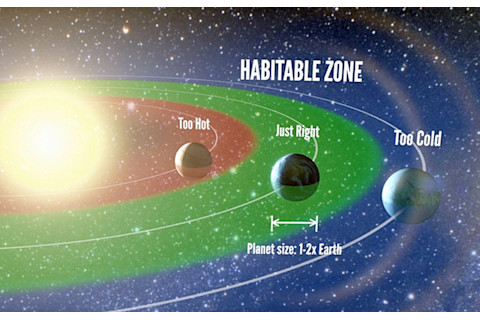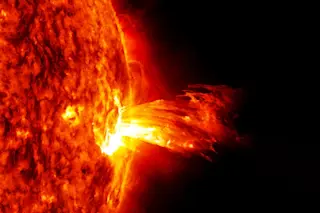
Good news for those searching for life elsewhere in the universe: a study released today suggests that planets orbiting surprisingly close to their stars can remain livable. This extension of the so-called habitable zone, based on computer modeling, is also important for what it implies about our own planet’s future habitability. Studying habitable zones has always been tricky, because there’s only one habitable planet we know of---our own. Still, astronomers have established the general boundaries for what they call a star’s habitable zone
, the donut-shaped region around that star where an Earth-like planet could host liquid water, necessary for life as we know it. At the zone’s outer edge water freezes from the cold, and at the inner edge it evaporates from the heat; conditions are “just right” inside the zone, hence the area's other common nickname: the Goldilocks zone.
Changing Conditions
But it’s not as simple as all that, because stars’ output changes over time. The sun, for example, has been getting steadily brighter and hotter over the millennia. So scientists have used complicated models to determine the precise boundaries of any given star’s habitable zone over time. But, as it turns out, they weren’t complicated enough. Today’s paper used 3-D climate models to determine just how hot a planet can get before it slips out of the habitable zone, and found that it can be hotter than the older, 1-D models suggested. (The new 3-D approach took into consideration things like clouds---a fairly important climate feature, if you think about it.) So, whereas previously a sun-like star was believed to have a habitable zone starting at about 0.99 astronomical units away (where 1 AU is the average Sun-Earth distance of about 93 million miles), now it starts a bit closer, at 0.95 AU. The findings are reported today in Nature.
Pushing the Boundaries
That might not seem like much, but it widens a sun-like star’s habitable zone by millions of miles. Thus it should, theoretically, be that much more likely for researchers to find an extrasolar planet out there with conditions suitable for life. And the results also hit closer to home. With the sun’s ever-increasing output, we know there will come a time when its habitable zone leaves Earth behind, rendering our own planet uninhabitable. This study, which proved planets are more heat-resistant than thought, also suggests that “we” won’t have to worry about our world losing all its liquid water for at least another billion years. Phew! Image credit Petigura/UC Berkeley, Howard/UH-Manoa, Marcy/UC Berkeley













